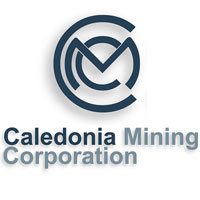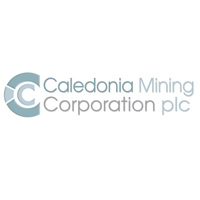Caledonia Mining Corporation (LON:CMCL) Chief Financial Officer Mark Learmonth caught up with DirectorsTalk for an exclusive interview to discuss the 2015 production update, target production for 2016, dividend payment and the move from Canada to Jersey
Q1: A 2015 production update out today, just looking through the numbers and Q4 production shows a modest improvement on previous quarters. Can you tell us how you were able to achieve that Mark?
A1: There’s no magic to that Q4 production number which as you point out was higher than Q3 and higher than Q4 in the preceding year and that’s because we, in the course of 2015, started to implement the revised investment plan which was something we announced to the market in November 2014. The key element to that revised investment plan is something that we call the ‘Tramming Loop’, it’s a circular haulage 750 metres below surface at the mine and all that does, it sounds terribly simple, but all that does is just allows us to move more material so that’s the ore, stuff that’s got the gold in, but also waste as well. Where previously we were so constrained underground that if we wanted to move more ore and increase production, we had to reduce the amount of development material we were moving and then we got sort of caught in this trap where we weren’t opening up enough areas and then constraining future production. So since about June this year, we’ve been in the happy position to be able to move more material, ore and waste, and that’s now beginning to flow through in terms of higher production because we’ve been able to increase the development work that we’re doing underground at the same time as maintaining production. So that is very much what we planned and the total production for 2015 which was just over 42,000 ounces was about 2% higher than our projection for the year. So the fact that we managed to increase production in Q4 shouldn’t come as a surprise, we said we were going to do it and we’re very pleased we did do it and we’re able to tell the market that we’ve achieved it. So no news, it’s just an indication that we’re delivering on what we said we were going to do.
Q2: Now, you’ve given guidance for 2016 production of 50,000 ounces, can you talk us through how that will be achieved?
A2: Again, 50,000 ounces is the target production that we’ve had out by now just over a year. The key factor in enabling us to achieve that 50,000 is going to be the commencement of production from material below 750 metres below ground and the way we’re going to do is when we commence the production from a sub-vertical shaft called the No. 6 Winze. The No. 6 Winze, we completed the shaft sinking again in the middle of 2015, we’ve now got the shaft equipped, we’ve done horizontal development underground to access the ore body and we expect to see incremental new production coming out of the No. 6 Winze from the middle of this quarter, Q1 2016. As that production ramps up over the course of 2016, we expect to see quarter on quarter increase in production each quarter so the first quarter of 2016 might be a little bit less than we achieved in the fourth quarter of 2015 and that will be a little bit lower because the first quarter of 2016 actually has fewer working days than the preceding quarter, there’s New Year and there’s also Easter but then thereafter, we expect Q2, Q3 and Q4 for production to increase 12/13/14,000 ounces a quarter in each of those quarters which will give us 50,000 ounces for the year and an exit run rate which is closer to 60,000 ounces a year. So 2016 will be the year of very considerable change for the business as we increase production and get our costs down further and therefore boost cash generation.
Q3: You recently announced a further dividend payment, can you tell us a bit more about your divided policy and how secure is it in the current gold price environment?
A3: Our dividend policy has always been very straightforward and when the gold price has high it was seemed to be somewhat unfashionable although I think now that people actually recognise it as being quite prudent. So our policy is quite straightforward, we paid 4 quarterly dividends of 1.5 Canadian cents a quarter, which is 6 Canadian cents for the year, so we didn’t have any of these sort of fancy mechanisms where we tied the pay-out to the gold price or to profit. Earlier on, about 2 weeks ago, we announced our intention to switch from reporting in Canadian dollars to reporting in US dollars and that just makes our life must easier and should make investors lives much easier because in all of our revenue news and nearly all of our costs are denominated in US dollars, it was just meaningless for us to report in Canadian dollars, where all the time we’re having to convert back from Canadian dollars to allow investors to actually get a meaningful prospective of the business based in US dollar terms. Having announced that shift from Canadian dollars to US dollars, we also need to rebase the dividend pay-out so a payment of 1.5 Canadian cents a quarter at the current exchange rate I think works out a something a little bit less than 1.1 cents a quarter so we rounded it up to 1 and 1/8, the North Americans like working in quarters and eighths, so we just rounded it up to 1 and 1/8 US cents per quarter. We’ve got every intention of maintaining that dividend, clearly if the gold price falls horrendously, we’ll have to do what’s right for the business but certainly at the current gold price and even somewhat lower than the current gold price. Internally we understand the benefit of the dividend to our shareholders, we recognise that the dividend is very supported to our share price and so whilst we’ll do what’s right for the business, we’re not going to play loose and fancy-free with the dividend and we’ve got every intention of maintaining it. As we move into a higher production scenario and lower costs, we’ll have the flexibility then as cash flow starts to improve again to consider increasing the dividend but that’s probably 12-18 months, perhaps even 2 years out, but that’s certainly the intention over time.
Q4: Finally, I just wanted to jump back to before Christmas when you announced your intention to move the business from Canada to Jersey, what does that mean for shareholders?
A4: Yes, we put that announcement out on the 21st December so not great timing on our part but that’s when all the work came to a fruition, came to a point in which we were obliged to make the statement so the timing was not really of our making but the upshot is that we’re proposing to re-domicile Caledonia Mining Corporation from being a Canadian company to being a company that’s based in Jersey. Shareholders won’t notice any difference at all, we’ll still be traded in London on AIM, we’ll still be traded in Toronto and also on the OTCQX so there’s going to be no difference at all in terms of the trading pattern and what you own. The critical difference will be that our dividends, the dividends that we pay out of the top company, will no longer be subject to Canadian Withholding tax which is anything between 15% and 25% and I hold my shares through the UK and I know that I suffer Canadian Withholding tax at 25% so what shareholders should understand is that shareholders vote in favour of the migration and it happens, and we expect it to happen towards the end of March, that would then mean that all future dividend payments would be free of Canadian Withholding tax and therefore be worth more to non-Canadian shareholders. In addition to that, being based in Jersey instead of being based in Canada also simplifies the management structures that we have and reduced the amount of time we spend on planes and it clarifies our tax structure and avoids some looming tax issues, which in the next 3-5 years may mean that if we were to stay domicile in Canada, could give rise to very significant CGT payments, capital gains tax payments, under the Canadian tax regime which hopefully we wouldn’t have to do if we’re a Jersey company. Shareholders will see the benefit unfold, probably at a full with the next dividend payment in May 2016, they’ll get the benefit of that on a free withholding tax.


